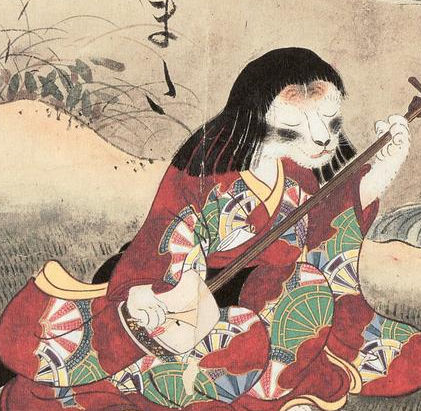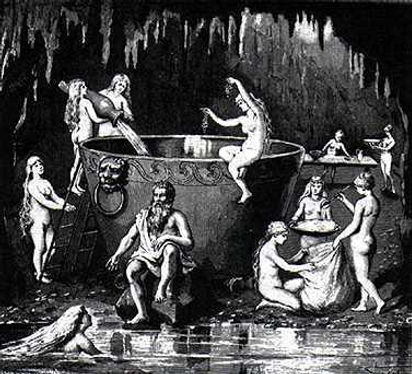
Welcome to
The Society Pages
Oh, so you're curious about the fabulous faces around the Grand Hotel?
Look no further!
The Society Pages have all the juicy gossip on anybody who's anybody!
The Nekomata
Considered a youkai, the nekomata is a cat that has grown old and transformed into a youkai. They have two tails or more, love to sing and dance, and cause mischief. They are also known to paw at the ground and raise the dead that lie beneath.
They are NOT bakeneko. Bakeneko only have one tail...


Andramelech
One of the Chancellors of Hell, Andramelech has quite a mysterious reputation. Depending on who you ask, he was once a Canaanite god, or a demon more clever and ambitious than Satan, or the President of the Senate of Demons, or the one in charge of Satan's wardrobe.
Or maybe all are true. He likes to keep you guessing.
Geshtinanna
She is a Sumerian goddess of fertility, agriculture, and dream interpretation, best remembered for her role in the changing of seasons and directly responsible for summer. For half the year, she takes her brother's place in Kur so that he may be in heaven with his lover, Inanna.
She is quiet and self-sacrificing, but never forget she is a powerful goddess


Siduri
A Mesopotamian divinity, best known for her role in the Epic of Gilgamesh where she tries to convince Gilgamesh of the virtues of a simple life. She is associated with the fermentation of beer and wine, and sometimes compared to Circe from The Odyssey.
She definitely takes issue with the comparison.
She has better beer than Circe.
Aegir
The Norse God of the Sea also claims the role as Host to the Gods. Throughout several of the Edda Poetics, Aegir is known to play host to many gatherings. He has nine daughters with his wife Ran, and he may or may not be a jotunn. He'll never tell.
The cauldron he uses to brew beer is from Thor, a gift that Aegir uses frequently. It keeps him focused on his hobby and not go drowning humans for fun.


The Rabbit in the Moon
Many have seen the Moon Rabbit, but there are many stories as to how he came to live there. He is a companion of the goddess Chang'e, forever making cakes to preserve her immortality. He also sacrificed his own body to feed the ruler of heaven, and his likeness was emblazened on the moon. No matter what tale you believe, the moon rabbit is a hard working, self-sacrificing spirit for all to see.
Khonsu
The Egyptian God of the Moon and the Passage of time, Khonsu has two forms: one that is a child wrapped as a mummy and one that is a man with a falcon's head like Horus. He is a traveller and a healer. His powers are said to help protect night travellers against the wild, promote fertility, and make the moon shine. He also appears as a serpent in a creation myth depicted on the walls of his temple in Egypt.
Gajasura
In Hindu mythology, the gajasura are demons who appear to be elephants. Most depictions of these elephant demons are of their defeat by an aspect of the god Shiva. Not a good look for this class of demon. Still, they are powerful demons with long memories, and you'd want one on your side in a fight.
Puck
The spirit Puck has nebulous origins in the British Isles and Norse mythology, but he is possibly most famous for his appearance in the Shakespearean play A Midsummer Night's Dream. He is a trickster who loves song, dance, and parties. Like the fae, he can be enticed by small offerings of milk and bread and may do some housework for you... but also might mess it all up just to spite you, or just to have a good laugh!

Raven
Hailing from the Pacific Northwest, many of the indigenous tribes saw Raven as a trickster spirit. He has played many important roles in mythology, including creating the sun and leading humans out of a clamshell on the beach. He is mercurial in all facets: a helper, a hinderance, and also a shapeshifter.
Best get on his good side!


